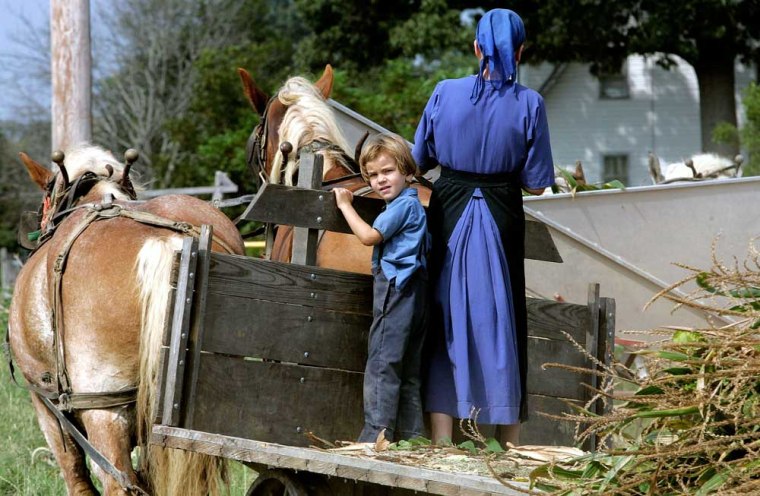They set themselves apart from nearly all modern things — electricity, automobiles, movies, television and video games. Most of all, they abhor violence.
But in the heart of Pennsylvania Amish country, an outsider barged through the door of a one-room schoolhouse and shot to death three girls. And when he did, he brought violence to a place that considers it evil.
“I don’t even know if I could begin to comprehend how this might affect those people,” said Steve Scott, an Amish expert at Elizabethtown College, about 30 miles west of the tiny hamlet in southern Lancaster County where Monday’s shootings occurred.
“The Amish believe that Christ taught we are not to return evil for evil,” said Scott. Even when faced with something as heinous as losing a child to an execution-style shooting, “they are taught to turn the other cheek.”
Charles Carl Roberts IV, a 32-year-old truck driver who lived in the area, carried a shotgun and a handgun into a rural schoolhouse, state police said. Then he lined the girls against the blackboard, tied them together by their feet, and shot them in the head, said Jeffrey Miller, commissioner of the state police.
Three girls died in the classroom. Seven others, some severely wounded, were rushed to nearby hospitals.
“The Amish are solid members of this community,” Miller said, then faltered. After a moment, he continued. “They didn’t deserve this. No one deserves this.”
Also known as Anabaptists, the Amish are a Christian denomination that separate themselves for a variety of religious reasons. They do not serve in the military, draw Social Security or accept other forms of government assistance. Old Order Amish, the most conservative and most prevalent in states including Ohio, Pennsylvania and Indiana, have attained a certain notoriety for their horse-drawn carriages with modern-day reflector triangles on the back, and handmade wares and foods they sell to tourists.
Living off the land
Life comes from the land — mostly crop farming and dairy farming. In all things, piety and plainness are emphasized. Women wear long dresses of solid fabric, with aprons in white or black and cloth cap or bonnet. Men dress in dark pants, suspenders and vest, with a broad-rimmed hat. Along with English, they speak a German dialect called Pennsylvania Dutch or Pennsylvania German.
They began arriving in Lancaster County around 1730, and the community numbers about 55,000 in Pennsylvania today. Their separation is often attributed to the literal interpretation of New Testament chapters — including II Corinthians and Romans. One of the most popular is II Corinthians 6:14: “Be ye not unequally yoked with unbelievers. For what do righteousness and wickedness have in common? Or what fellowship can light have with darkness?”
The Amish are an offshoot of the Mennonites, who fled from Switzerland to Germany under persecution for refusing to join the military and for not believing in infant baptism. They split from the Mennonites in 1693, mostly because of the Amish practice of shunning.
To be shunned meant expulsion from the community for breaching religious guidelines. All communication and contact is cut off, even among families. Someone who joins the faith, but then denounces it and leaves, for example, would be shunned.
When members of the community die, they are buried in wooden coffins; women in all white and men in all black. Bodies are embalmed, but undertakers do not apply makeup. Funerals are held in the victim’s home, and the dead are delivered to the cemetery in a horse-drawn carriage. A hymn is read, but there is no singing.
Like other religions, rules have softened over time, necessitated by commerce and need. There are Amish telephone booths, for instance, that can be used in emergencies. Some dairies sporadically use generator electricity to cool milk containers so it can be sold according to market regulations. Some hire taxis to take them to town.
But at their core, the Amish believe life is based on faith. And belief in the world to come, where there is no violence.
